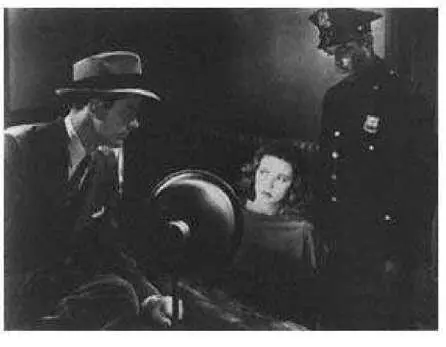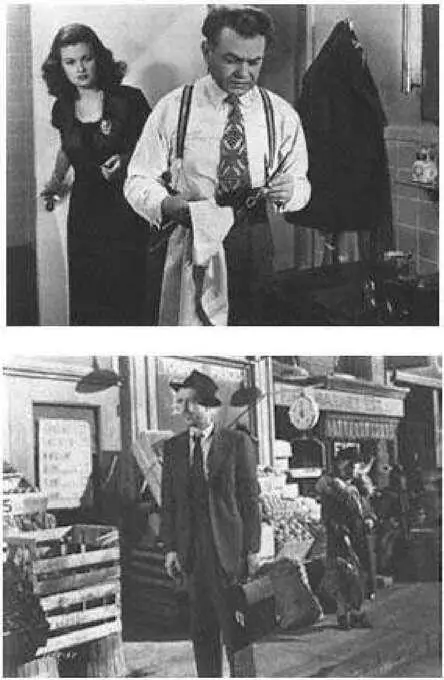The themes and motifs of Vian's life and workindigo moods, smoky jazz clubs, American fiction, and romantic isolationresemble those in movies of his day, and his scandalous novel foregrounds two issues that seem relevant to film noir: sexual violence and racial blackness or otherness. Psychoanalytic feminism tells us something about the first issue (much feminist theory grows out of the study of American films noirs), although the discussion needs to be historicized and linked to changing patterns of censorship. In regard to the second issue, we need to examine the metaphor of darkness. The discourse on noir grew out of a European male fascination with the instinctive (a fascination that was evident in most forms of high modernism), and many of the films admired by the French involve white characters who cross borders to visit Latin America, Chinatown, or the ' 'wrong" parts of the city. When the idea of noir was imported to America, this implication was somewhat obscured; the term sounded more artistic in French, so it was seldom translated as "black cinema." 8
I say more about such matters in subsequent chapters; for now, however, the publication and eventual adaptation of J'irai cracher interest me for historical reasons, because they coincide with what I shall call the first (or historical) age of American film noir: the period between the postwar arrival of Hollywood movies in Paris and the beginnings of the French New Wave. We can never know when the first film noir was made (examples have been claimed as far back as D. W. Griffith's Muscateers of Pig Alley [1912] and Louis Feuillade's Fantomas [1913]), but everyone agrees that the first writings on Hollywood noir appeared in French film journals in August 1946at exactly the moment when "Vernon Sullivan" was composing his novel. The term was used by analogy with the Série noire, and it surfaced in discussions of five features made before, during, and after the war, all of which had just been exhibited in succession on Paris movie screens: The Maltese Falcon; Double Indemnity; Laura; Murder, My Sweet; andsomewhat surprisingly, in light of the fact that it disappears from most subsequent writings The Lost Weekend. Another picture released in Paris that summer, The Woman in the Window, described by one French reviewer as a "bourgeois tragedy," was later to become a noir classic. 9The forthcoming Metro-Goldwyn-Mayer production of The Postman Always Rings Twice was mentioned alongside the initial group of five, and Citizen Kane, which was also mentioned, was placed in a class by itself. Critical discussion centered mainly on the first four thrillerswhich, even though they were not exactly alike (The Maltese Falcon does not have a first-person narrator or flashbacks, and Laura is not based on a hard-boiled novel), seemed to belong together. These films would become the prototypical members of an emergent category, and they would have an unusual influence on French thinking for over a decade.
In one sense the French invented the American film noir, and they did so because local conditions predisposed them to view Hollywood in certain ways. As R. Barton Palmer observes, postwar France possessed a sophisticated film culture, consisting of theaters, journals, and "cine-clubs" where movies were treated as art rather than as commercial entertainment. 10Equally important, the decade after the liberation was characterized by a strong resurgence of Americanism among French directors and critics, many of whom sought to refashion their art cinema along the more "authentic" lines of Hollywood genre movies. 11A nouvelle vague would eventually grow out of this dialectic between America and Europe, and the so-called film noirwhich was visibly indebted to European modernismbecame the most important category in French criticism.


Which of these films was not described as an American film noir by French writers in the summer of 1946: Laura (1944), The Woman in the Window (1944), or The Lost Weekend (1945)? Answer on p. 13. (Museum of Modern Art Stills Archive.)
The French were also predisposed to invent American noir because it evoked a golden age of their own cinema. They were quick to observe that the new Hollywood thrillers resembled such Popular Front films as Pépé le Moko (1936), Hôtel du Nord (1938), and Le jour se lève (1939)a group of shadowy melodramas, set in an urban criminal milieu and featuring doomed protagonists who behaved with sangfroid under pressure. The term film noir had in fact been employed by French writers of the late 1930s in discussions of these films. Film historian Charles O'Brien points out that in the years immediately before the war, the word noir often had pejorative connotations and was frequently used by the right-wing French press in their attacks on the "immorality and scandal" of left-wing culture. 13 Noir was nevertheless embraced as a descriptive adjective by several writers on the Left (particularly after the war), and the style favored by the Popular Front, whether it was called "noir" or not, constituted a respectable and quite recognizable type of filmmaking for most critics throughout the world. Thus, when Double Indemnity was released in the United States in 1944, a reviewer for The Hollywood Reporter noted that it was "more than a little reminiscent of the late lamented, excellent French technique." (To reassure moviegoers, he added, "This is not to say that it is 'arty'" [24 August 1944].)
French writers after the war might have recognized the equally significant contributions of other European nations to the evolution of the crime or espionage film. For example, they could have alluded to Alfred Hitchcock's British thrillers of the 1930s andhad they known itto Carol Reed's Night Train to Munich (1940). These were the films with which American reviewers compared the 1941 version of The Maltese Falcon; in fact, when Billy Wilder completed Double Indemnity, he told the Los Angeles Times that he intended to "out-Hitchcock Hitchcock." 14In 1946, however, the French not only ignored the British but also conspicuously avoided the Germans. 15Instead, the two earliest essays on Hollywood film noirNino Frank's "Un nouveau genre 'policier': L'aventure criminelle," published in the socialist L'écran français in August 1946, and Jean-Pierre Chartier's "Les Américains aussi font des films' noirs,'" published three months later in the more conservative Revue du cinéma (an ancestor of Cahiers)treated the American pictures as if they were a new phenomenon with only a few Gallic predecessors.
For Nino Frank, it seemed that a young generation of Hollywood auteurs, led by John Huston, Billy Wilder, and Raymond Chandler, had rejected the sentimental humanism of "museum objects" like John Ford, Frank Capra, and William Wyler. 16 The new filmmakers specialized in the policier (police story), which, according to Frank, always deals with the "social fantastic" and the "dynamism of violent death" (8); unlike earlier practitioners, however, the Americans were more concerned with "criminal psychology" and were therefore making "criminal adventures'' or "films 'noirs'" (14). Such films were convoluted, harsh, and misogynistic, but they made the characters in most movies seem like "puppets" (14). Moreover, they often employed a first-person narration and flashbacks that fragmented the story, producing a montage. Frank claimed that Sacha Guitry had been the first to use this technique, in Le roman d'un tricheur (1936), but he wondered whether or not Hollywood had outclassed Paris. Henceforth, the French would need to make "somber" films in which there was "more dynamism in an unmoving shot than in a majestic panorama"(14).
Читать дальше














